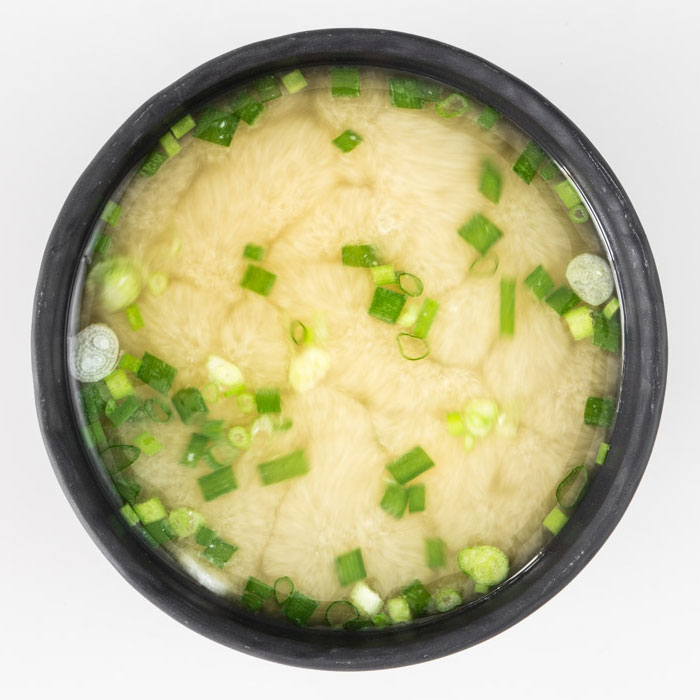WHAT DO SOY SAUCE AND PARMESAN HAVE IN COMMON?
The taste!
The umami taste is defined as the 5th taste following sour, bitter, sweet and salty.
The presence of glutamic acid is responsible for the umami taste. Parmesan contains 1,680 mg of glutamic acid for 100 g. As for soy sauce, it has 782 mg for 100 g.
The link between the umami taste and glutamate was discovered by the Japanese chemist Kikunae Ikeda (1864-1936)(1).
Around the same time, the French chef Auguste Escoffier (1846-1935) won success in his Parisian restaurant with a tasty new sauce recipe: veal stock, also condensed glutamate.
THE FIFTH TASTE
Humans can discern 5 tastes.
The gastronome Brillat-Savarin (1755-1826) cited an additional flavor he called ‘osmazome’, which he linked specifically to meat stocks. And when the French Chef Auguste Escoffier (1846-1935) created the veal stock that enhanced the flavors of so many dishes, he was simply condensing glutamate.
However, it wasn’t until the 1980s that umami was finally recognized as a discernible taste alongside sweetness, saltiness, sourness and bitterness. As with the other tastes, the human tongue has specific umami taste buds.
But it was only in the year 2000 that research finally proved that umami was due to the interaction between glutamic acid and these specific taste buds.
THE DISCOVERY
“Those who pay careful attention to their tastebuds will discover in the complex flavour of asparagus, tomatoes, cheese and meat, a common and yet absolutely singular taste which cannot be called sweet, or sour, or salty, or bitter…” Dr. Kikunae Ikeda, Eighth International Congress of Applied Chemistry, Washington 1912
Dashi is prepared using kombu seaweed. Upon returning to Japan, Kikunae Ikeda examined the composition of kombu and succeeded in extracting glutamic acid. An amino acid, it was in fact discovered 40 years earlier by the German chemist K.H.L. Rithausen. He renamed it “umami”, which means “tasty” in Japanese.

GLUTAMIC ACID
The umami taste comes from the carboxylate anion of glutamic acid, one of the 20 naturally occurring α-amino acids in protein-rich foods like meat, cheese, stocks, etc. Sweetness is connected to mono/disaccharides, leading us to starchy foods. Umami is connected to L-glutamic acid, leading us to protein-rich foods.
The salts of glutamic acid can be hydrolyzed to produce glutamate ions. Monosodium glutamate, also known as the food additive E621, is a flavor enhancer commonly used to add the umami taste to foods.
UMAMI AND KOJI
Soy sauce and miso soup are fermented foods in which the umami taste is very pronounced.
Fermentation, referred to as the Koji process, is precisely what gives them this flavor.
The word ‘koji’ refers to the fungus Aspergillus oryzae to the process of solid state fermentation (the koji process), and to the substrates the fungus has been grown on (rice, soybean, wheat bran).
Aspergillus oryzaeproduces a large diversity of enzymes: lipases, amylases and proteases. Some proteases release glutamic acid and are responsible for the umami taste we discern.
.Ikeda, K. (1909) New seasonings.J. Tokyo Chem. Soc. , 30,820 -836 in Japanese.
Sweet, Sour, Salty, Bitter ... and Umami by Robert Krulwich http://www.npr.org/templates/story/story.php?storyId=15819485
Chaudhari, N., Landin, A.M. and Roper, S.D. (2000) A novel metabotropic glutamate receptor functions as a taste receptor. Nat. Neurosci., 3,113 -119
BIBLIOGRAPHY
Sweet, Sour, Salty, Bitter ... and Umami. Robert Krulwich.
The Discovery of Umami. Bernd Lindemann, Yoko Ogiwara and Yuzo Ninomiya
Quand les Japonais inventent le 5e goût. Patrick DUVAL.
IGIS : Service International d'Information sur le Glutamate.
